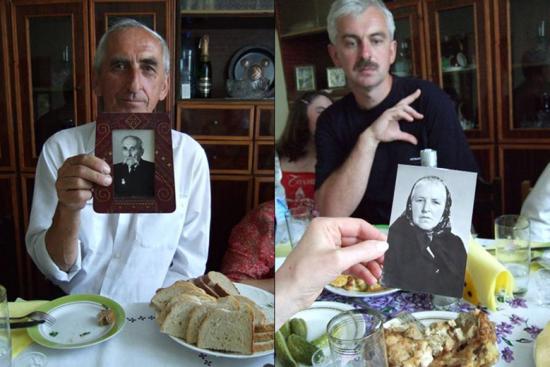

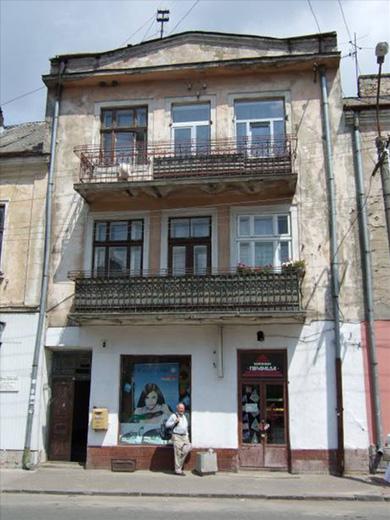

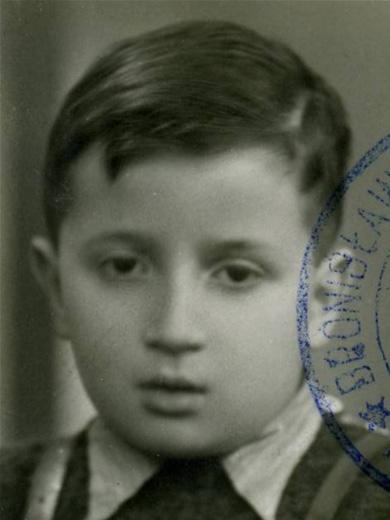

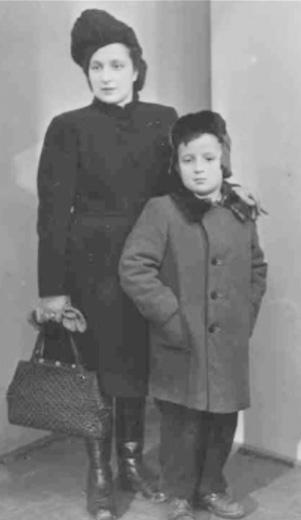

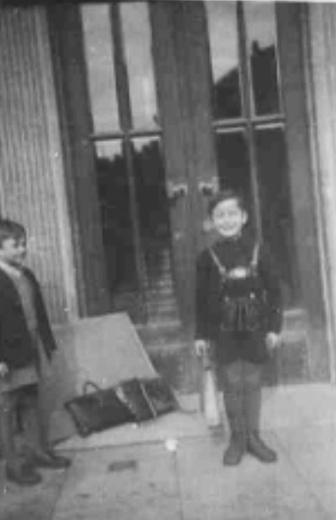

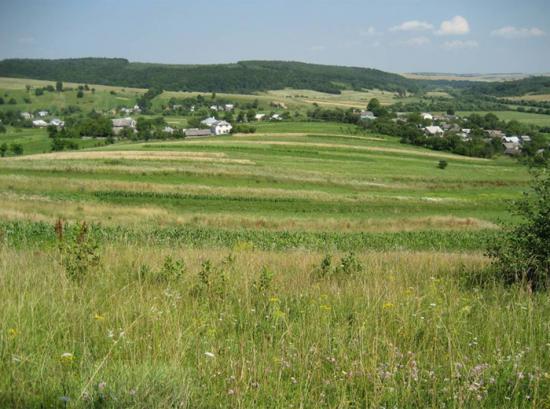

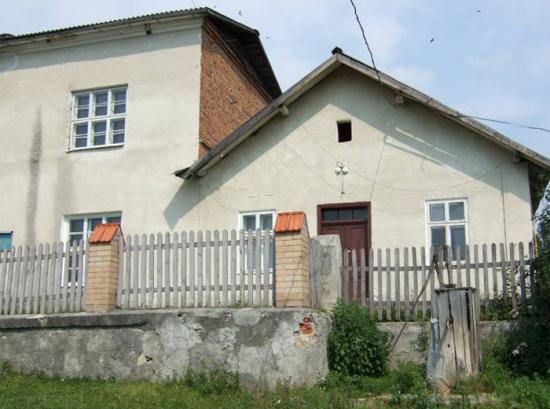

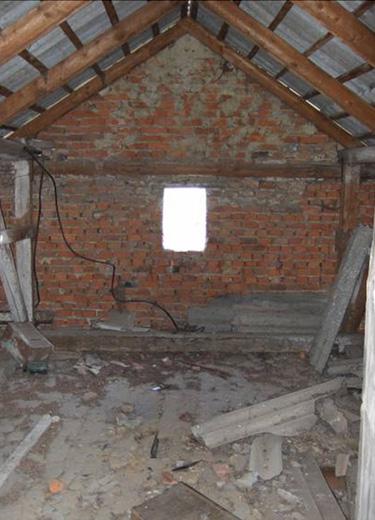

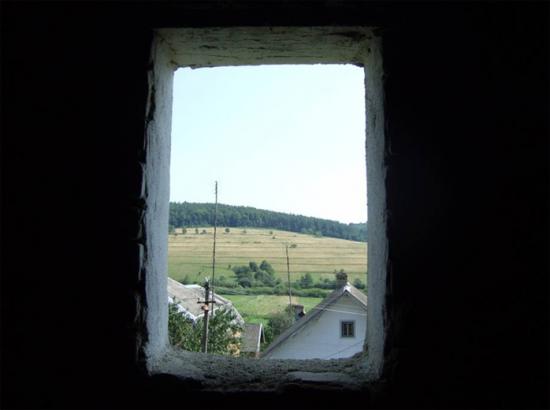

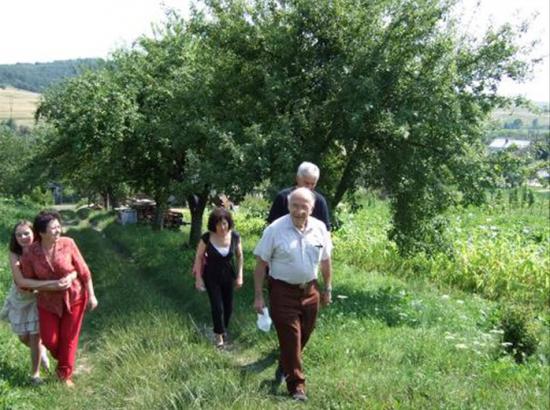

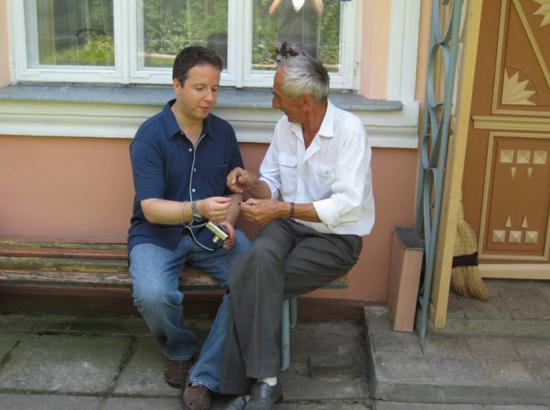

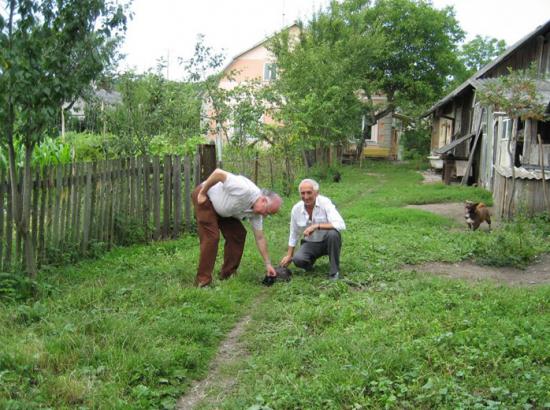

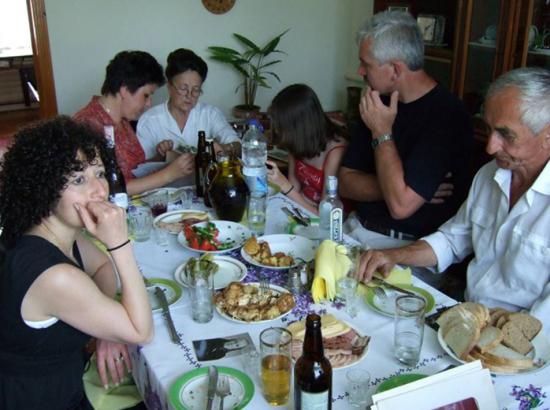

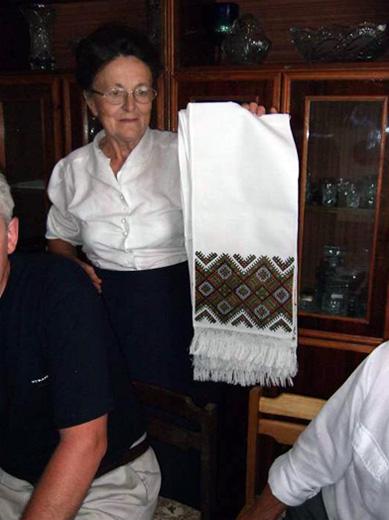

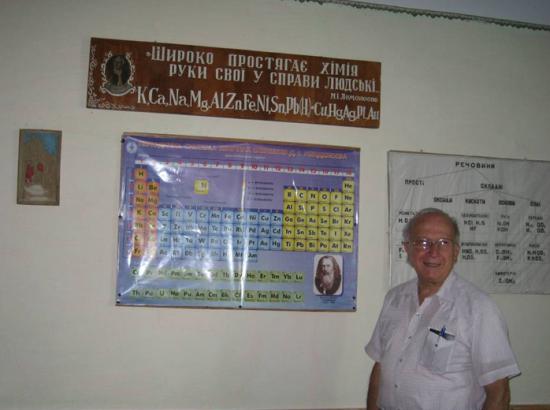

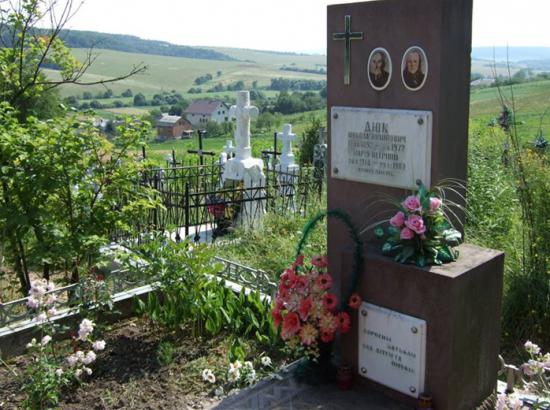

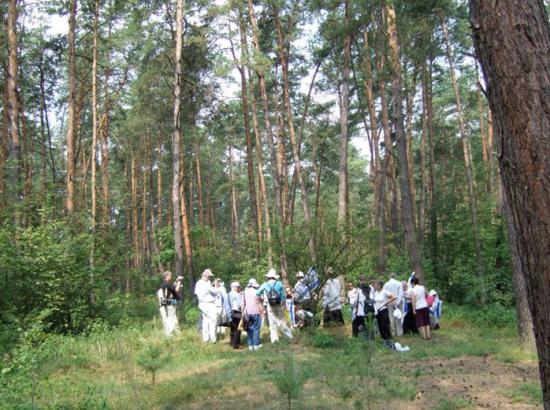

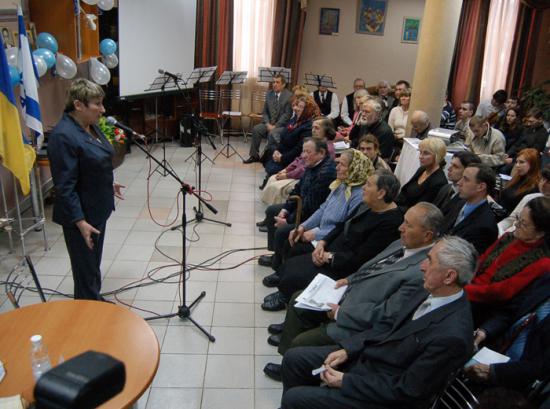

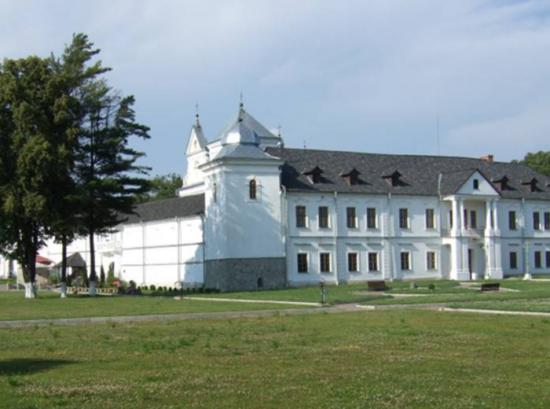

Hillel and Clara Safran lived in Złoczów, Poland (now Zolochiv, Ukraine) with their son Roald. In July 1941, when Roald was four years old, the German army conquered Zlochow. Soon afterwards, Roald’s grandfather and some other relatives were murdered by the Einsatzgruppen – the shooting squads that were implementing the final solution in the territories conquered from the Soviet Union. At the beginning of 1942 the Safran family and other relatives were taken to a forced labor camp. The family father, Hillel Safran, was an engineer, and together with the other slave laborers had to build roads for the German army.
In January 1943, the Safrans arranged for their family to escape and go into hiding with Mykola Dyuk and his wife Maria. Dyuk was a teacher and the Principal of the school in Uniow (now Univ), and lived in the schoolhouse, which was the only brick building in the small village. It housed the one classroom and the teacher’s living quarters. It was in this building that the village teacher hid the Jewish family. In the same small village, in a Greek Catholic monastery, the monks, headed by Klement Sheptytskyi (another person recognized as Righteous among the Nations) was hidden Adam Daniel Rotfeld, a future Foreign Minister of Poland, and several other Jewish children.
Hillel Safran stayed behind in the camp. In June 1943, six months after his family had left, the Germans executed him. He had been the organizer of an attempt to break out of the camp – an attempt that was betrayed and led to the murder of its organizer.
Clara Safran, her son Roald, her brother Samuel Rosen and his wife Josefina found shelter with the Dyuks. Later they were joined by another uncle – Friedrich Rosen.
At first Dyuk hid the family in the attic. It had a window, from which Roald would watch the children play. Standing at the window he could only watch them secretly, but never join their games. He later described the experience in a poem entitled Fields of Vision. Confined to the narrow space, Roald would also pass the time by playing games with his mother. Hidden in the attic in the small village, they would imagine travelling from Uniow to San Francisco. “To get from Uniow to San Francisco,/ this is what you do, mammi; first/ you walk out to the road that ends/ near the church, you wait a while/ for a peasant to give you a ride/ for a few kopeks, to the main road/ the one where you said father/ built the bridges. There you wait/ for the bus. In Zloczow you catch/ a train….” [. Games in the Attic, 1943]. At that time they didn’t know that they would one day be free and that they would eventually make the trip to America where they would begin a new life.
The attic roof had cracks and the place was exposed to the weather. The hiding family was therefore moved to a windowless storage room. Thus Roald was deprived of the views of the village.
They remained in hiding for 15 months – from January 1943 until June 1944. No one in the village knew about their existence. It was not only the Jews who were in danger of death. The Dyuk family too lived in great fear of the Germans or of being denounced by their neighbors. They had three little children, and by hiding Jews in their schoolhouse, Mykola and Maria Dyuk exposed the entire family to great danger. After the war Clara Safran-Hoffmann related how Maria Dyuk was at first opposed to sheltering the Jewish family. Faced with the possible consequences to those who were hiding Jews, she was afraid for her family. But Mykola convinced her to go along, and she cared for the Jews and prepared their food.
After the war, still in Poland, Clara Safran remarried another Holocaust survivor, Naftali Margulies, who later changed his name to Hoffmann, Roald adopted his step-father’s name. In 1949 the family emigrated to the USA. Roald became a renowned chemist, winning many awards and in 1981 received the Nobel Prize. He is also a writer who has published four volumes of poetry.
Contact with the Dyuk family was maintained over the years. The Dyuks once sent to the Hoffmann family a linen shirt embroidered in traditional Ukrainian manner by Maria Dyuk with thread that the Hoffmanns had sent over in a package from America.
Grappling with the past and remembering her murdered family was very painful for Clara Hoffmann and she never wrote her story. It was only her son, Roald, and his sister Elinor, who in 2007 turned to Yad Vashem and asked to recognize the rescuers as Righteous Among the Nations.
On 23 September 2007, the commission for the Designation of the Righteous conferred upon Mykola and Maria Dyuk the title of Righteous Among the Nations. Israeli ambassador in Kiev, Zina Kleitman, presented the medal and certificate to the Dyuks’ son at an official ceremony.
From the testimony of Roald Hoffman
The attic was a false attic above the real one. There was one window, and through that window I could see the children in the school – this was a schoolhouse – playing outside. And I felt – I still feel – the pain of seeing these children being free to move and I couldn't move out…
Then I had to keep quiet. That must have been difficult. That's a great tribute to my mother – she kept inventing games to play with me for 15 months – from January '43 until June '44. Games – I remember some of the games…
The ones I remember best were geography games. They were games like… my mother would specify some spot around the world like San Francisco, and I would have to say how I would get from Zloczów to San Francisco, exactly how I would travel: I would take the railroad up to Danzig, get on a boat, and then I would have to name every sea that I passed… that was lots of fun.






